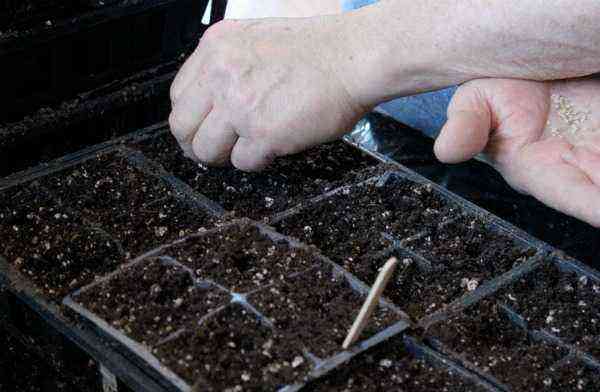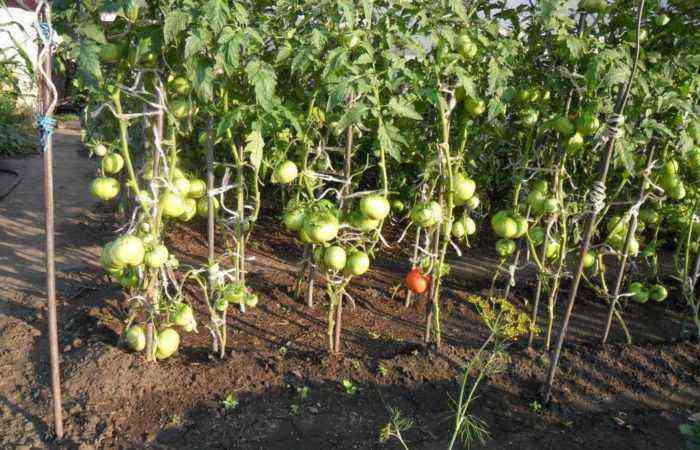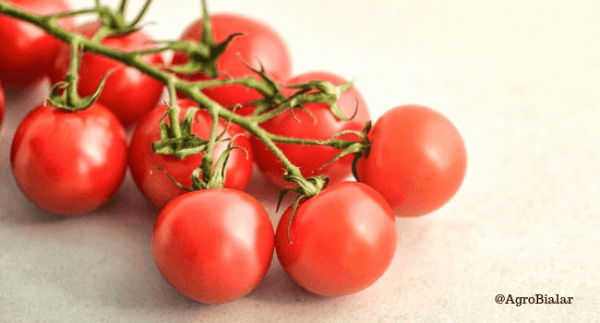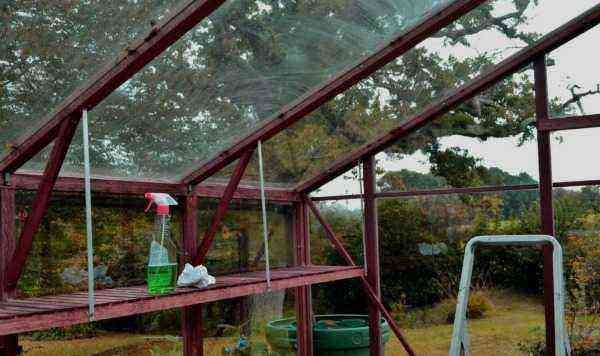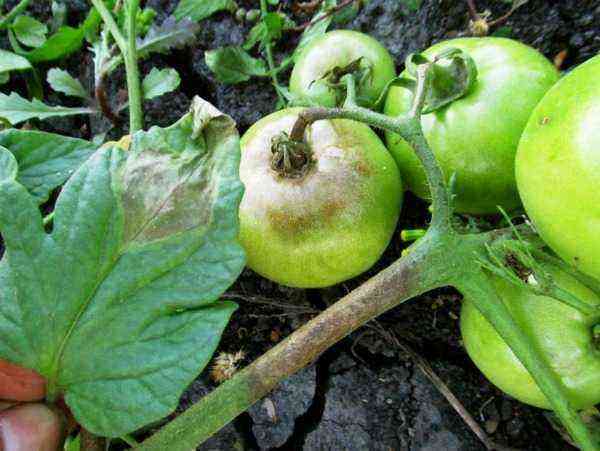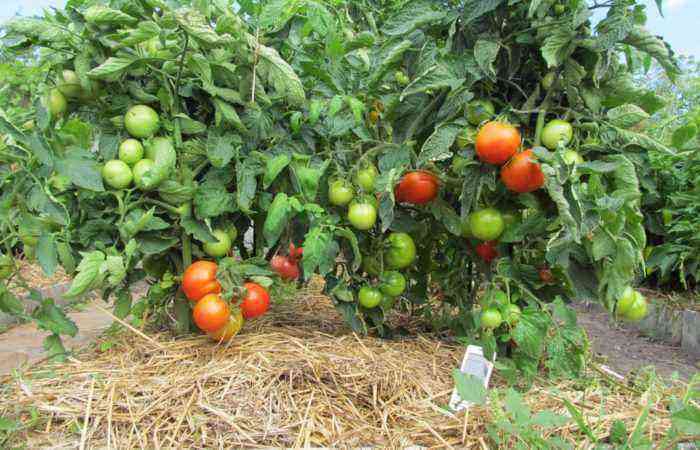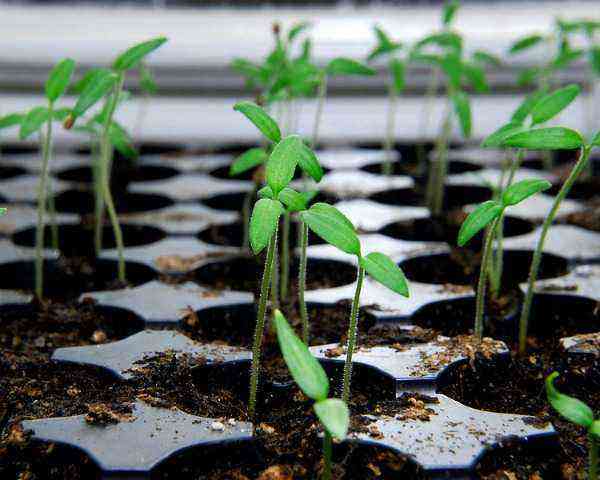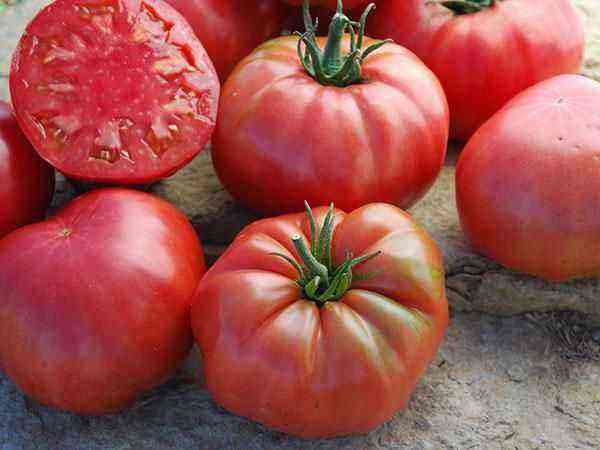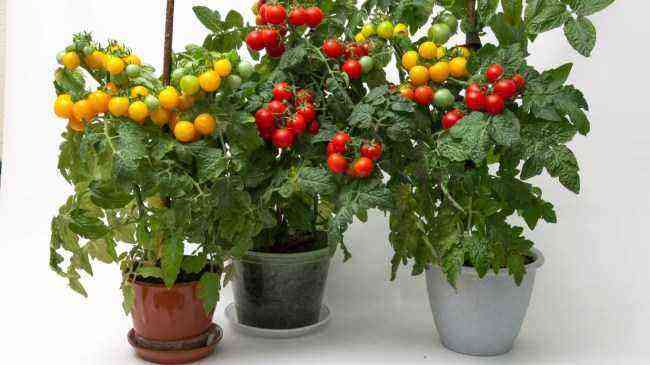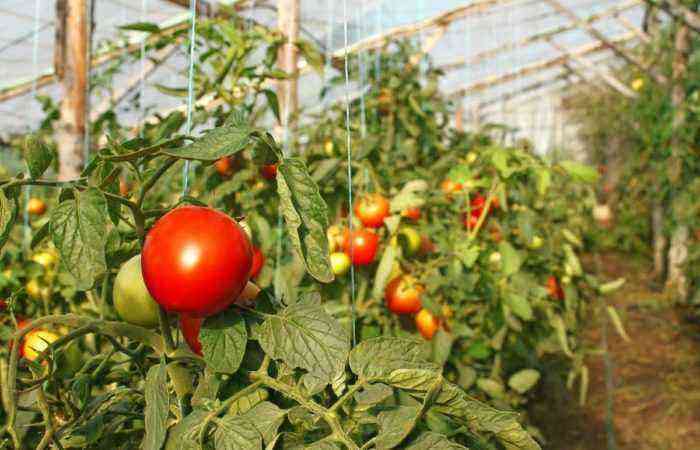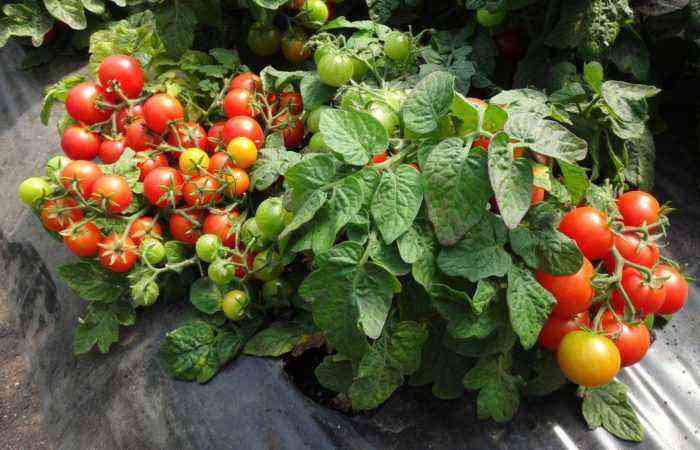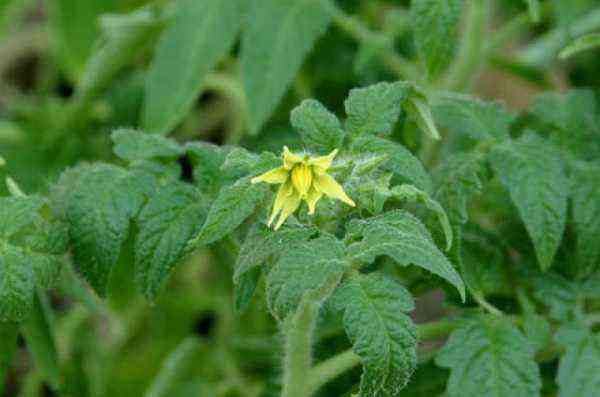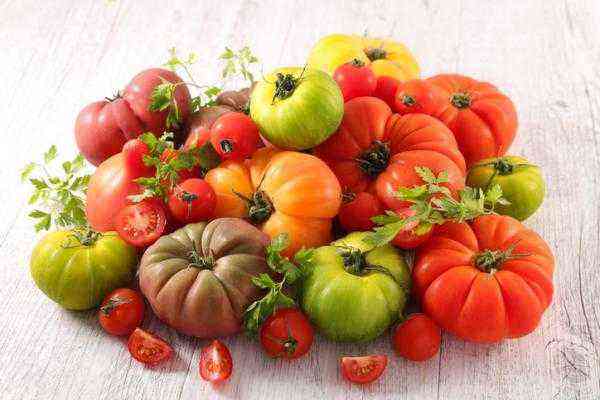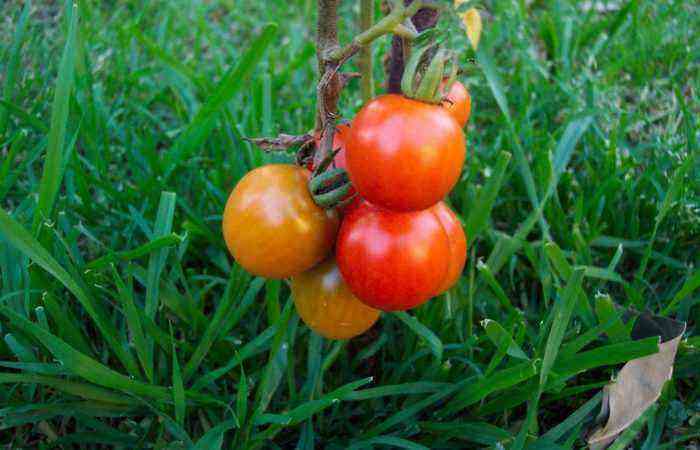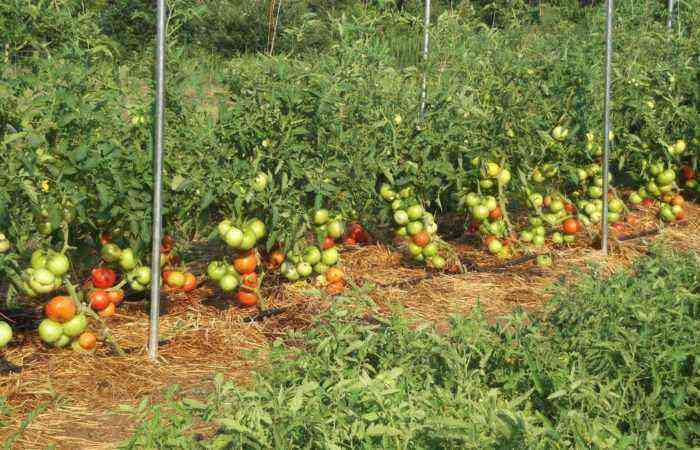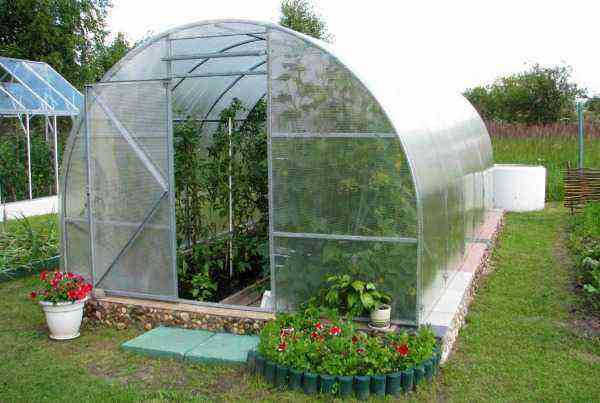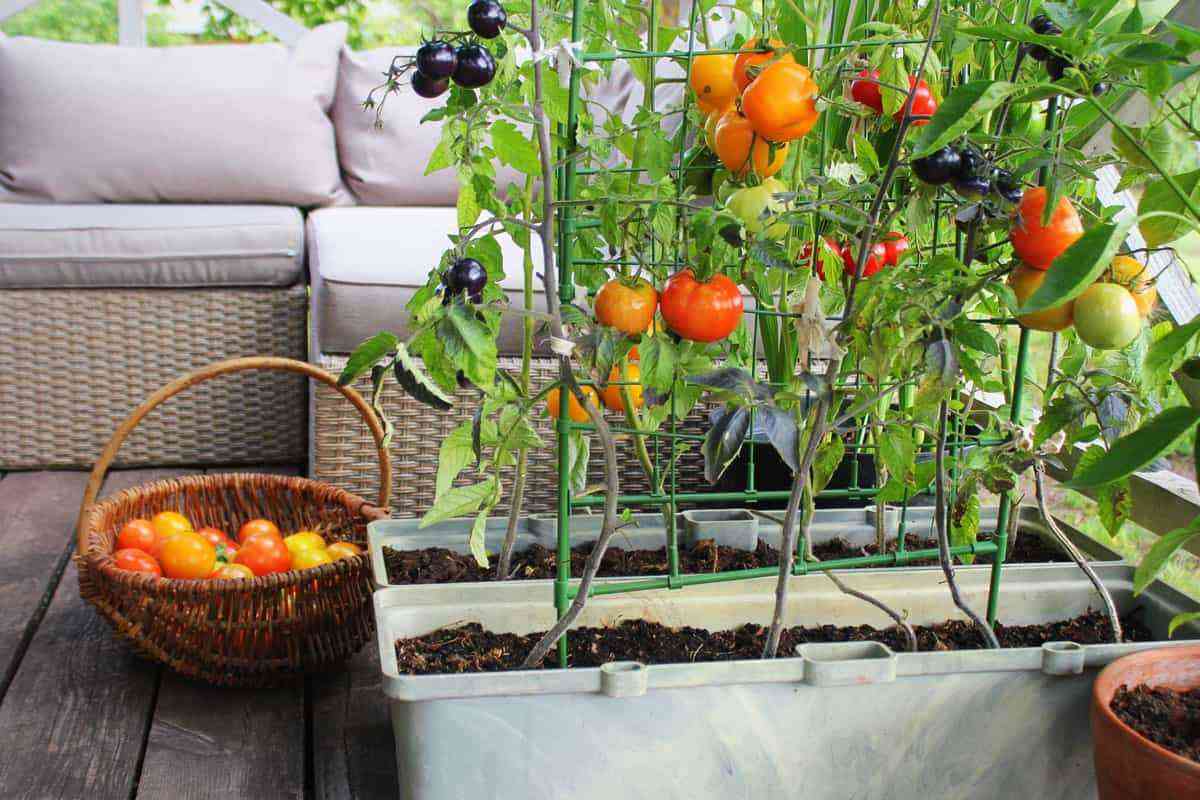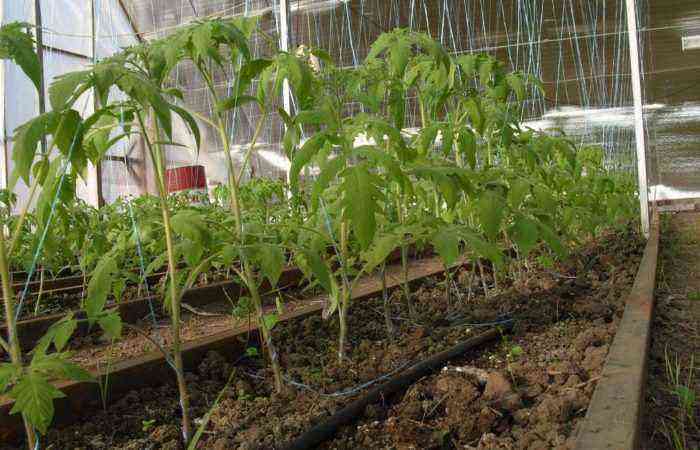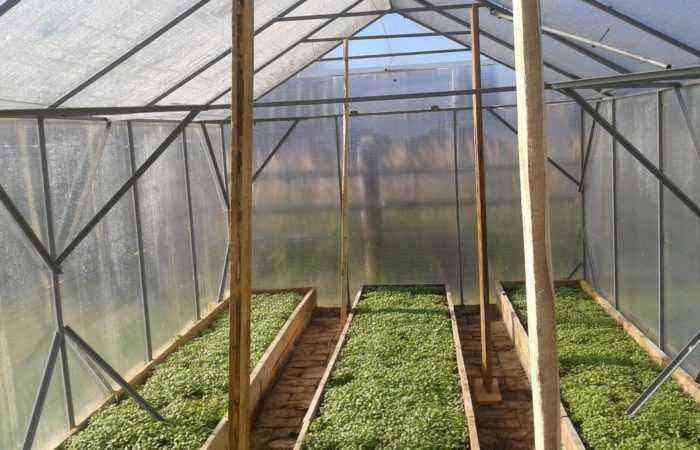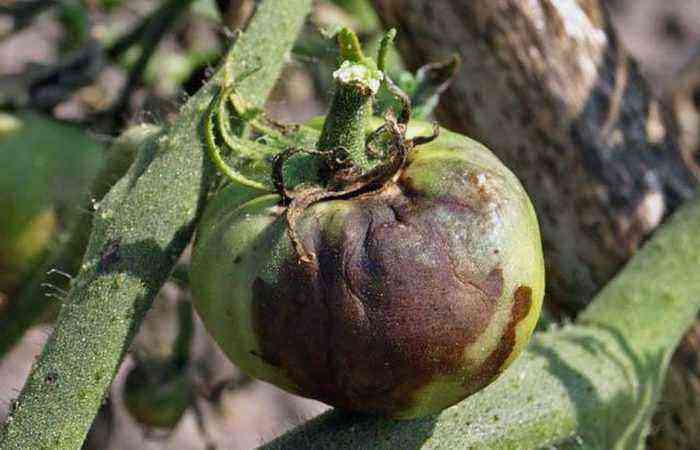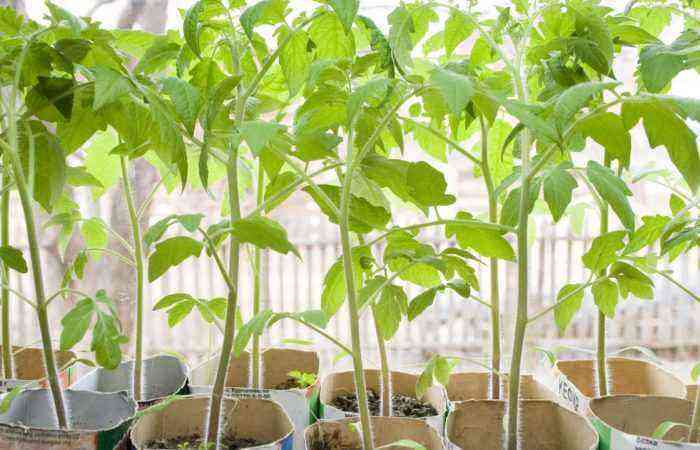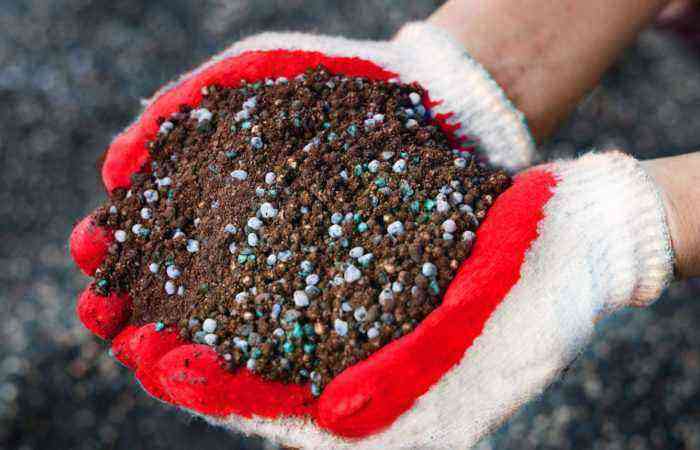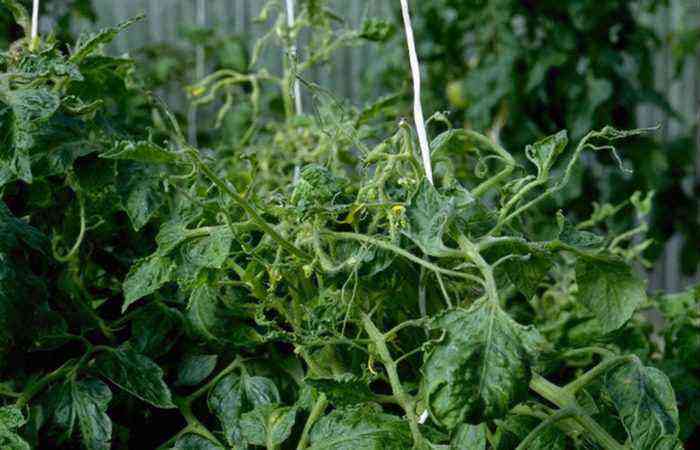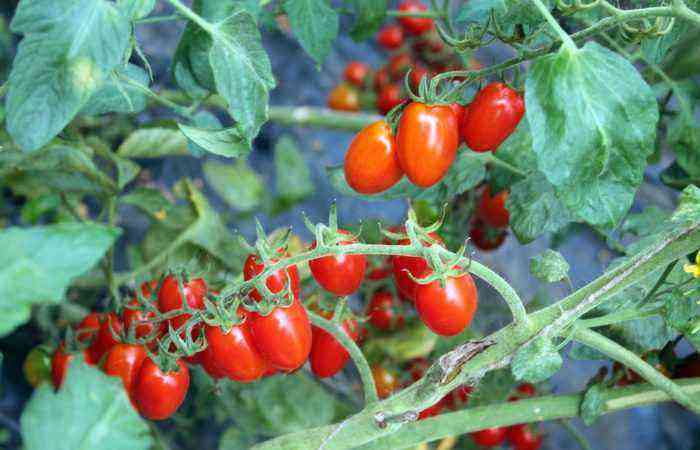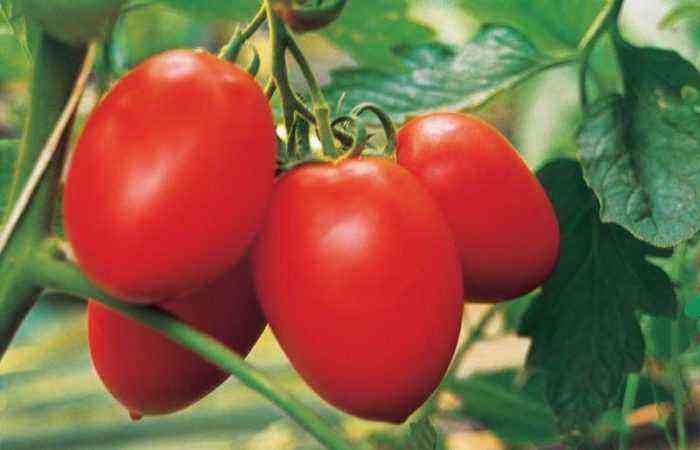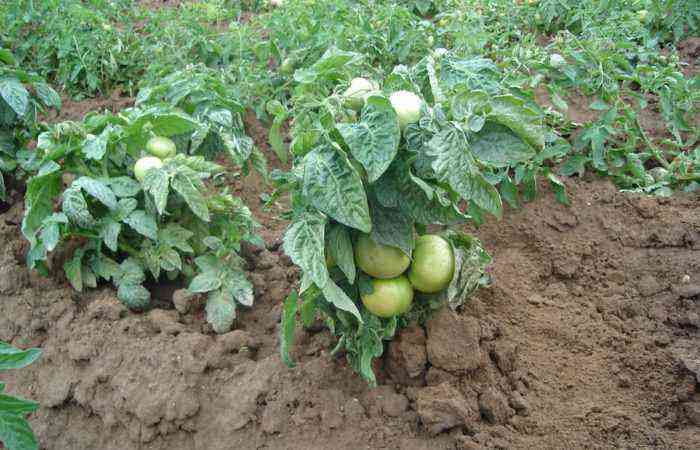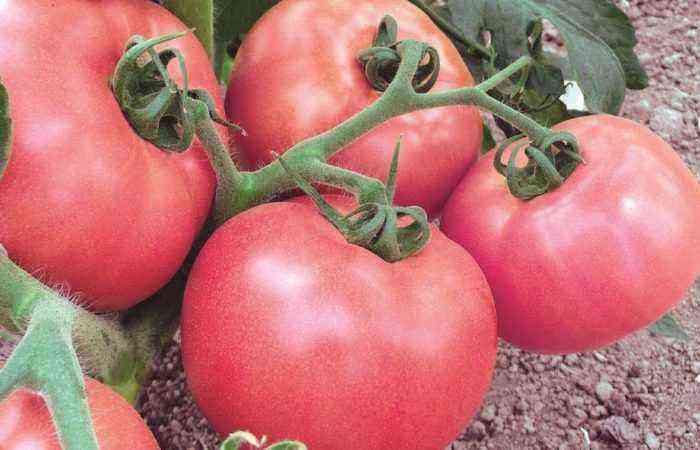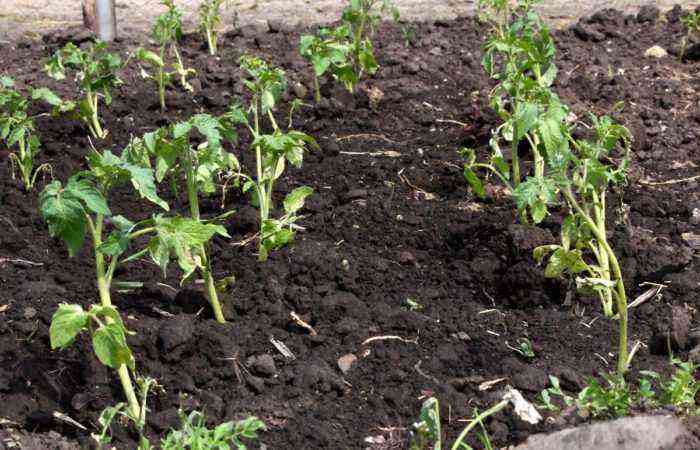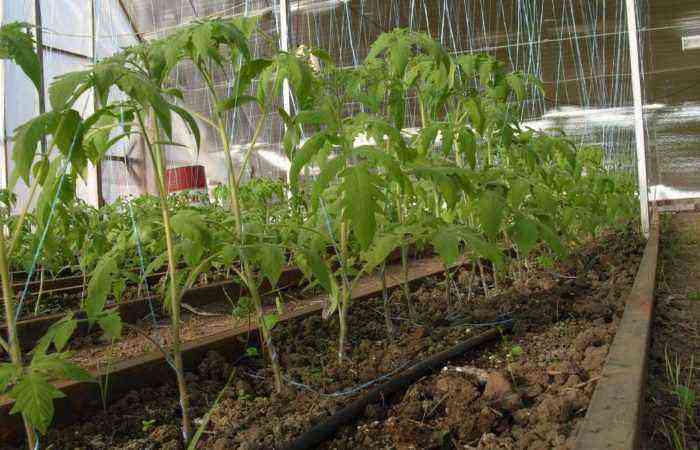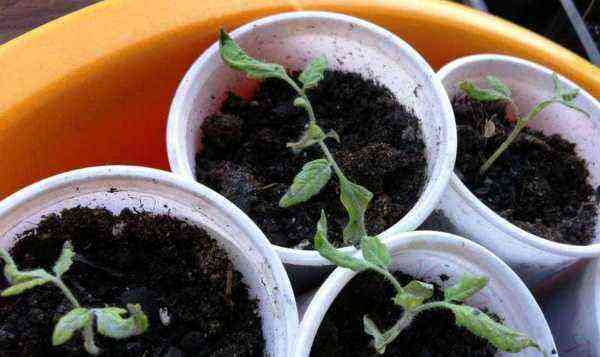Tomatoes are one of the most common and favorite crops for vegetable growers. This heat-loving plant, whose homeland is America, can grow in beds in a temperate climate, but gives the largest yields in protected ground. The richness of the tomato crop depends on the correctness of planting seedlings of tomatoes in the greenhouse, the time of planting and the composition of the soil.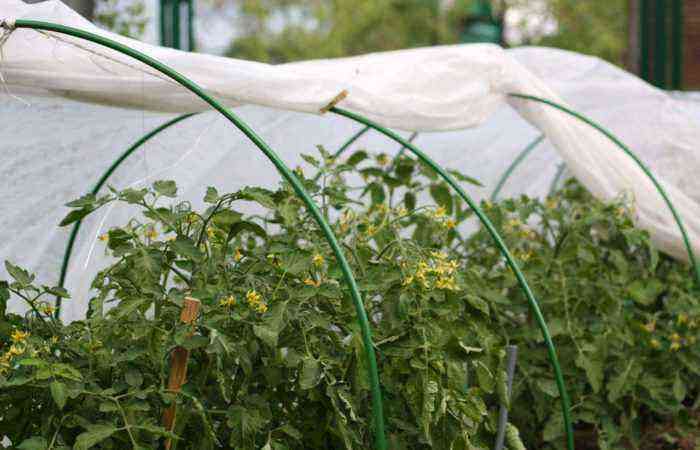
Pros and cons of planting tomato seedlings in a greenhouse
Cultivation of tomato seedlings in greenhouses allows you to get high yields (with proper care, up to 30-50% higher than in unprotected soil). In temperate climates, crop ripening in greenhouses occurs a month earlier than in beds, but any method has pros and cons.
The positive aspects of growing tomato seedlings in a greenhouse.
- Possibility of temperature regulation. Frosts leading to the death of plants are excluded.
- The ability to use biological preparations to control pests, the action of which in the fresh air is limited due to adverse weather conditions.
- Control over water, gas and food regime.
- Ability to use suitable soil.
- Getting several crops per season in heated greenhouses.
Disadvantages of the greenhouse method.
- High risk of damage to tomatoes by diseases and pests. Large crowding of bushes, high humidity, and the absence of pest-fighting insects lead to crop damage.
- Additional investment. Even film shelter and arcs are not very cheap. Capital greenhouses with heating require even more cash investments. As a result, the cost of harvest increases.
- In the heat of the greenhouse is very hot.
The best varieties of tomatoes for the greenhouse
Getting a bountiful harvest is directly related to the right choice of tomato varieties.
Both undersized (determinant) and tall (indeterminate) crops are suitable for growing in greenhouses. Hybrids have proven themselves well, as they are resistant to diseases and temperature extremes.
The most popular determinant varieties that are loved by vegetable growers:
- tornado – hybrid, mid-early, round bright red fruits, 70-90;
- baby – undersized hybrid (50-80 cm), red flat-round fruits 60-70 g. Yields up to 3 kg per plant in greenhouses that are not heated;
- blagovest is a hybrid variety of early ripening, with red fruits of saturated color weighing 100-110 g. The average yield is 5-6 kg per plant.
The best indeterminate varieties that give high yields in protected ground.
- bull’s heart – medium ripening, fruit weight about 400 g, dark pink, fleshy, shaped like a heart. From 1 bush you can get 4-6 kg of tomatoes;
- cosmonaut Volkov – mid-season, fruits are red, large, average yield is 5 kg per bush, but can reach 20 kg;
- black iceberg is a hybrid. The fruits are dark red, about 80 g, very light. Productivity is 3-3,5 kg per plant.
Planting time for tomato seedlings in the greenhouse
In vegetable growing, there is a direction called biodynamic farming.
It is based on the theory that the Earth and Space are a single system in which everything is interconnected. All planets affect the Earth’s ecosystems to a greater or lesser extent.
The main element in this system is the Sun. The moon is second in importance. It affects the life and development of plants through the aquatic environment. The planet is responsible for the ebb and flow in water bodies and for the movement of juices in plants. Many gardeners work in the garden in accordance with the phases of the moon.
According to this teaching, the sowing of seeds should be carried out 2-3 days before the full moon, since at this time there is more active growth, and the seeds germinate faster.
The first quarter of the waning moon is favorable for root growth. At this time, it is good to transplant seedlings so that they take root faster. If by the time of landing in a permanent place the roots are good, and the stem is not sufficiently developed, then the sprouts are determined for a permanent place during the growing moon.
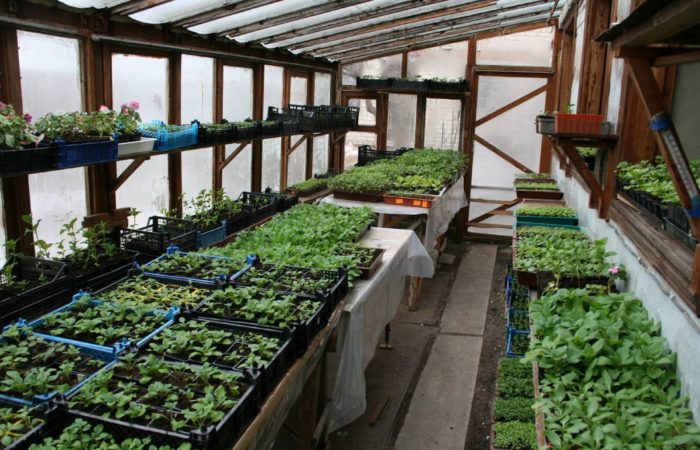
In temperate climates, seedlings are planted in greenhouses without heating from May 3 to May 10. At the time of transplanting to a permanent place, tomatoes should reach a height of 25-35 cm and have from 7 to 12 leaves. If the greenhouse is not heated, it is better to cover it with two layers of film with a distance between layers of 2-3 cm. An air cushion will protect the bores from possible frosts, increasing the temperature inside by 2-3 degrees. After June 5, the 2nd layer of the film is removed.
Ridges are best done parallel to the long side of the greenhouse with a height of 35-40 cm. The width of the beds is 60-90 cm, the row spacing is at least 60 cm. There should be no frost at the time of disembarkation. The soil in the greenhouse should be at least 12-15°C.
Preparing the soil in the greenhouse for planting tomatoes
The main disadvantage of greenhouse soil is that it is quickly depleted. It is necessary to change the land at least once every 5 years.
For tomatoes, soil preparation begins in the fall. The bottom of the beds is lined with a layer of sawdust, needles or straw 10 cm thick for additional warming of the area. Above put a layer of compost of the same thickness. Fertile soil 20 cm high is poured on top. Soddy or humus soil is chosen for growing tomatoes.
The following fertilizers are applied to the soil for digging at the rate of 1 m2:
- potassium sulfate 1 tbsp. l.;
- double granulated superphosphate 3 tbsp. l.;
- potassium magnesia 1 tbsp. l.;
- wood ash 1,5 cups;
- carbamide or sodium nitrate 1 tsp.
An additional 0,5 buckets of coarse sand are added to the peat substrate and a bucket of humus, soddy soil and sawdust per 1 m2. In clay or loamy soils add 1 bucket of sawdust, peat and humus per square meter.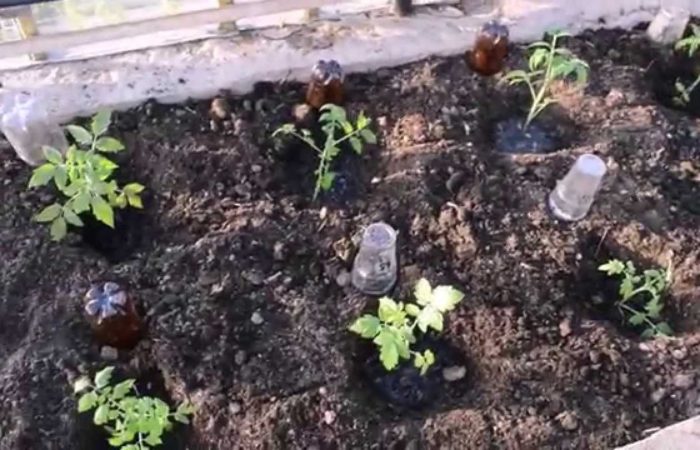
In spring, the soil must be prepared for planting, “warm up”. To do this, the following activities are carried out.
- Plentifully water the beds with hot water (60ºС), but not boiling water.
- Contribute biofuel: manure or other organic matter 20-25% of the total soil volume. Fresh manure must be applied 1,5 months before planting tomatoes.
Soil disinfection is carried out 2 times a year. In spring before transplanting and in autumn after harvest. For these purposes, use Bordeaux liquid, dolomite flour or copper sulfate.
The author of the video shares tips on when it is better to plant seedlings in a greenhouse, depending on the region, how to prepare the soil.
Planting tomato seedlings in a permanent place
The scheme of planting tomatoes in the garden depends on the choice of variety, height and spreading of the bush.
- standard and determinant plants are planted 20 cm apart. Row spacing should be 45-50 cm;
- undersized early ripening varieties, formed in 2-3 stems, are staggered at a distance of 35-40 cm from each other. Distance between rows 50-55 cm;
- seedlings of indeterminate varieties are planted in a checkerboard pattern. Distance between bushes 55-60 cm, between rows 75-80 cm.
For planting sprouts in the greenhouse, choose a warm, but not very hot day. Pits are made in the ground 15 cm deep and spilled with a solution of potassium permanganate (1 g per 10 liters of water) at a temperature of 50-60ºC at the rate of 1 liter per hole. After 5 minutes, the sprouts are planted in the wells.
Half an hour before transplanting, seedlings must be watered abundantly. Bushes are planted so that the inflorescences are facing south, and if other plants shade them on the south side, then the flowers should be directed towards the aisle.
5-6 days after planting, the tomatoes must be poured abundantly with warm water and carefully loosen the soil. Simultaneously with the planting of sprouts, supports are installed, to which the plants will later be tied.
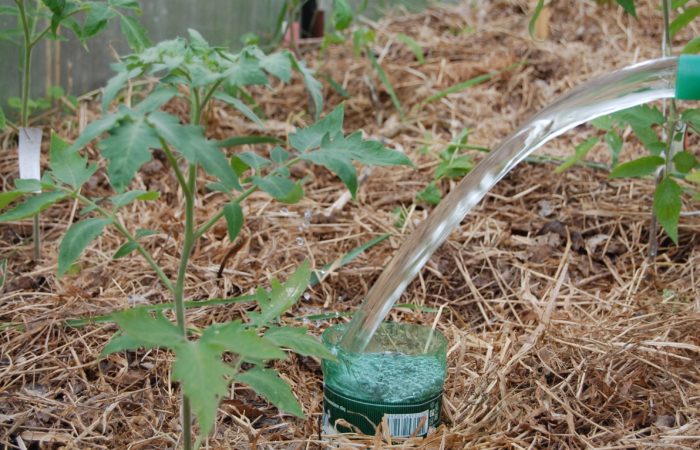
For growing tomatoes in a greenhouse, the optimum air temperature during the day should be 21-25ºC, at night 16-19ºC, humidity 60-65%. The greenhouse must be constantly ventilated, especially during flowering, for better pollination. For the same purpose, the plants are well shaken.
During the growing season, tomatoes make 3 root dressings.
- 3 weeks after transplanting sprouts into the greenhouse. In 10 liters of water, dilute half a liter of liquid mullein and 1 tbsp. l. nitrophoska. Watered at the rate of 1 liter for a tomato.
- The second is carried out in another week and a half. 1 st. l. complex fertilizer and 1 tsp. potassium sulfate is diluted in 10 liters of water. Under 1 plant pour 1 liter of liquid.
- The third is arranged 14-16 days after the second feeding. 2 tbsp. l. wood ash and 1 tbsp. l. superphosphate is diluted in 10 liters of water. Pour 1,5-2 liters under the bush.
Growing tomatoes in a temperate climate with short summers and frequent frosts is not an easy task even for experienced vegetable growers. Planting tomato seedlings in a greenhouse makes it possible to cultivate this popular plant in the zone of risky farming and in northern latitudes. Growing in a protected area allows even beginners to get high yields, if they adhere to the basic rules of plant care.
